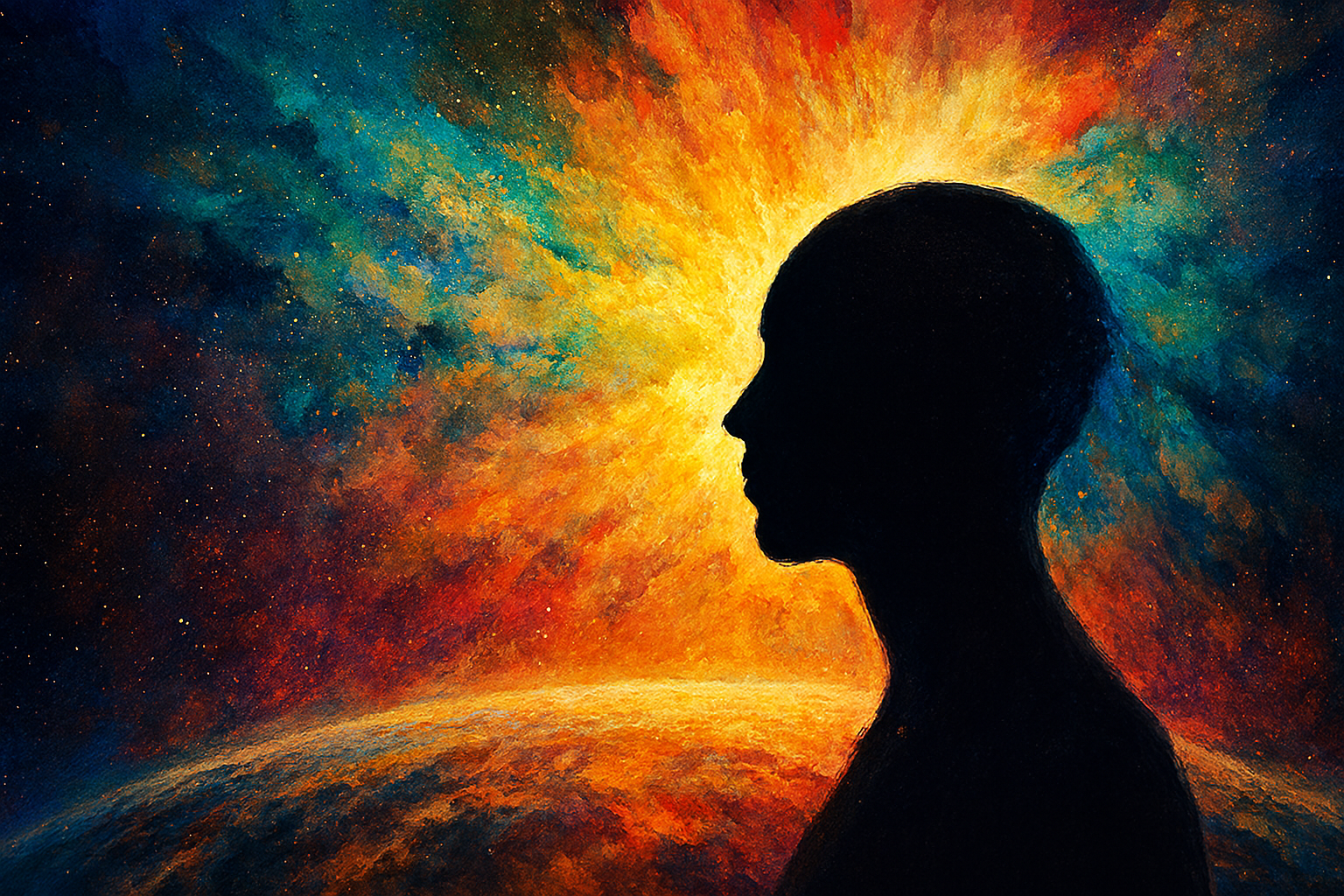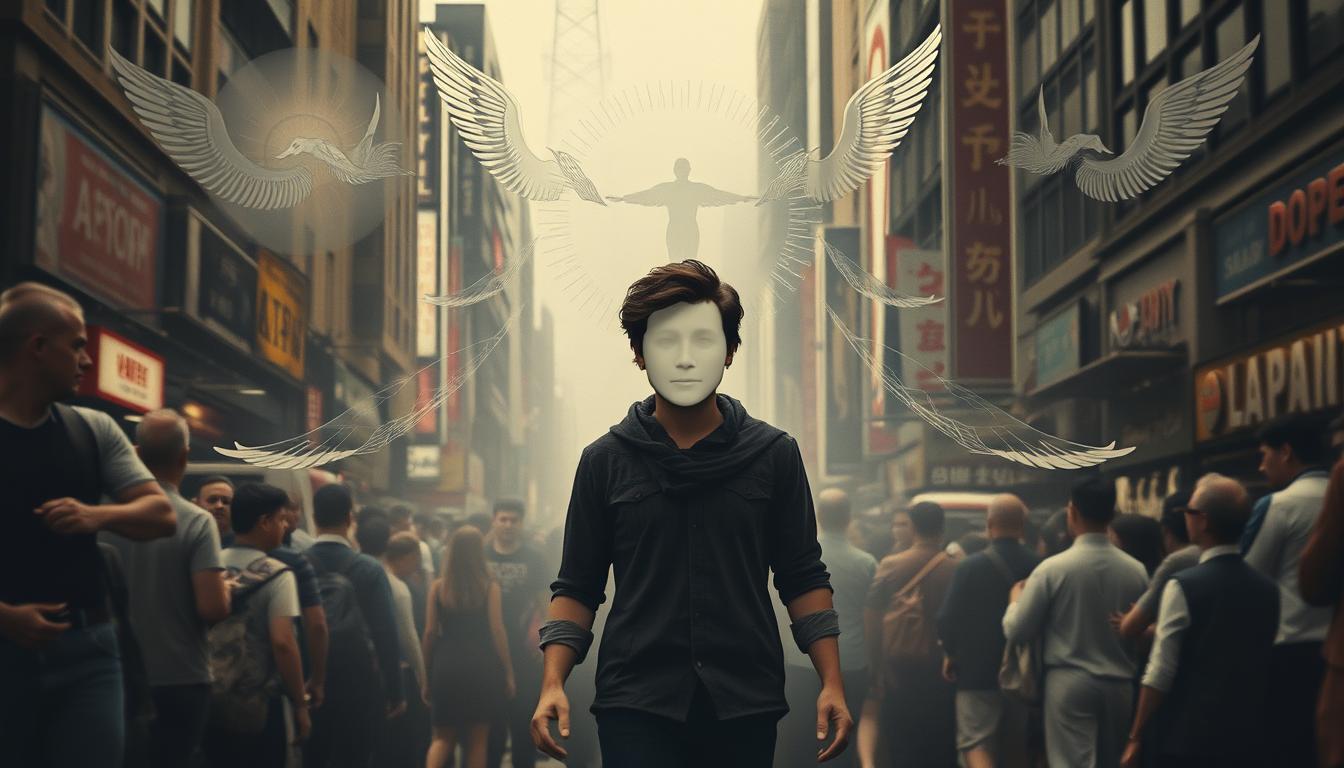
The journey of spiritual ascension isn’t a straight path but rather a spiral of growth, challenges, and profound revelations. While many speak of awakening as a single event, the truth is far more nuanced. This ancient journey has been mapped by mystics, sages, and spiritual teachers throughout history—each describing a series of distinct stages that transform consciousness from dormancy to enlightenment.
What makes this journey both fascinating and challenging is that no two paths look exactly alike. Yet, certain universal patterns emerge across traditions, from Buddhist teachings to modern spiritual experiences. Whether triggered by life crisis, mystical experience, or gradual realization, these stages represent the soul’s evolution toward its highest expression.
Stage 1: Dormancy – The Unconscious Existence
The dormancy stage is characterized by unconscious living and spiritual unawareness
In this initial stage of spiritual ascension, most people live in what ancient Zen masters called “the dream state.” Life is experienced primarily through the lens of cultural conditioning, societal expectations, and ego identification. There’s little questioning of deeper purpose or meaning beyond material success and social validation.
The Tibetan Book of the Dead refers to this as “the bardo of ordinary life,” where souls remain unaware of their true nature. In modern terms, psychologist Carl Jung described this as living with an unconscious shadow—the parts of ourselves we’ve disowned or never recognized.
During dormancy, you may feel a vague sense that “something is missing” despite external achievements. Life might seem predictable, perhaps comfortable, but lacking depth. You follow established patterns without questioning their origin or purpose. The ancient Gnostics called this state “hylic” or material-bound consciousness.
“Most people are not really living at all. They exist, but that is all.”
What makes dormancy particularly challenging is that you don’t know what you don’t know. The fish doesn’t question the water. Yet within this unconscious existence lie the seeds of awakening, waiting for the right conditions to sprout.
Stage 2: Awakening Trigger – The Call to Adventure

The awakening trigger often comes as a profound disruption to ordinary reality
The second stage of spiritual ascension arrives as a disruption—sometimes gentle, often dramatic. This is what Joseph Campbell called “the call to adventure” in the hero’s journey. Something breaks through the veil of ordinary perception, forcing you to question everything you thought you knew.
Awakening triggers typically fall into several categories:
- A profound loss or crisis (relationship ending, death of a loved one, illness)
- Spontaneous mystical experiences or visions
- Encounters with spiritual teachers or teachings that resonate deeply
- Plant medicine or psychedelic experiences that dissolve ordinary perception
- Gradual disillusionment with materialistic values and lifestyle
In Kundalini traditions, this stage might involve the first stirrings of energy at the base of the spine. In Christian mysticism, it’s often described as “the first touch of grace.” Whatever form it takes, the awakening trigger creates a crack in your previous worldview through which new light begins to enter.
During this stage, you may experience a mix of excitement and fear. The familiar ground beneath your feet begins to shift, and while part of you may resist, another part recognizes a profound truth in what’s unfolding. As Eckhart Tolle describes his own awakening: “I couldn’t live with myself any longer. And in this, a question arose without an answer: who is the ‘I’ that cannot live with the self?”
Stage 3: Purification – Releasing the Old Self
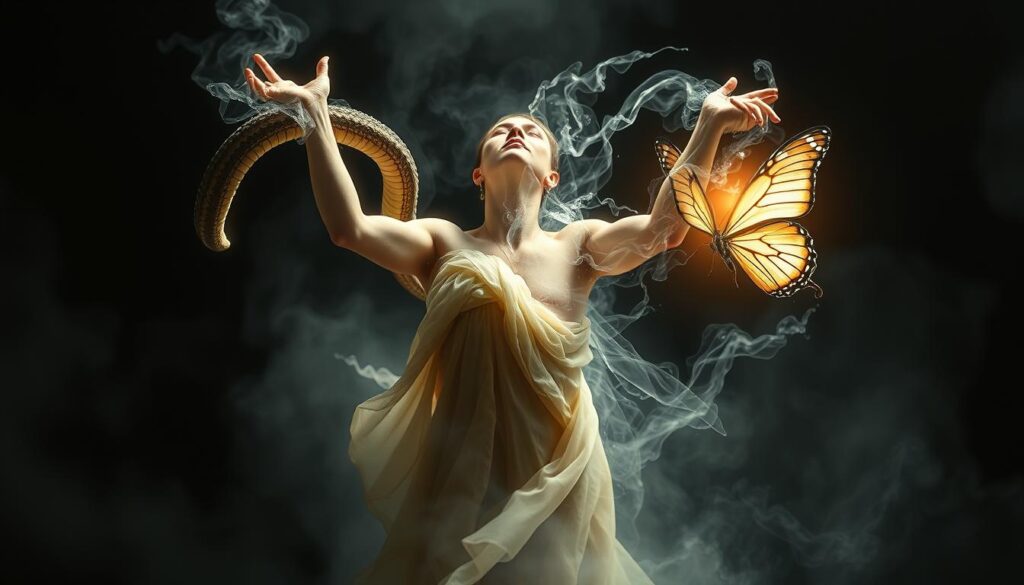
The purification stage involves releasing old patterns and identities
Once awakened, you enter what many traditions call the purification phase—a necessary but often challenging period of releasing old patterns, beliefs, and attachments. The Sufis call this stage “fana” or annihilation of the false self. In alchemy, it’s known as “calcination,” the burning away of impurities.
During purification, several processes typically unfold:
Internal Purification
- Confronting shadow aspects and repressed emotions
- Recognizing and releasing limiting beliefs
- Healing childhood wounds and trauma
- Questioning core identity structures
External Purification
- Changing relationships that no longer serve growth
- Simplifying life and possessions
- Shifting career or purpose alignment
- Adopting new practices and habits
This stage can feel like being in a cocoon—the old self is dissolving while the new has yet to form. Many experience significant life changes during this period, from relationship endings to career shifts. What’s actually happening is a realignment with your authentic nature and purpose.
Modern spiritual teacher Adyashanti describes this phase as “the undoing,” noting that “awakening is not a state but a process: the process of freeing yourself from the state you’re in.” The purification stage requires courage, as you must face aspects of yourself and your life that may have been long avoided or denied.
Stage 4: Illumination – First Glimpses of Truth

The illumination stage brings moments of profound clarity and connection
Following the challenges of purification comes a period of illumination—moments of profound clarity, insight, and connection that confirm you’re on the right path. In Buddhist tradition, these are called “kensho” experiences—glimpses of your true nature. Christian mystics refer to them as “consolations,” while Vedantic traditions describe them as experiences of “sat-chit-ananda” (being-consciousness-bliss).
During illumination, you may experience:
- Moments of non-dual awareness where the sense of separation dissolves
- Profound feelings of interconnectedness with all life
- Spontaneous insights into the nature of reality
- Heightened intuition and synchronicities
- Periods of inexplicable joy, peace, or love
These experiences often come unexpectedly—while in nature, during meditation, or even in ordinary moments that suddenly become extraordinary. They provide fuel for the journey and confirmation that what you’re experiencing is real, not imagined.
However, a common pitfall in this stage is spiritual materialism—becoming attached to these experiences and seeking to collect them like trophies. As Ram Dass cautioned: “If you’re seeking cosmic consciousness for your ego, forget it.” The illumination stage is not the destination but rather signposts along the way.
Journal Prompt: Reflect on moments in your life when you’ve experienced unexpected clarity, connection, or insight. What were the circumstances? How did these experiences change your perspective?
Stage 5: Dark Night of the Soul – The Great Surrender

The dark night of the soul represents a profound spiritual crisis and surrender
Perhaps the most challenging stage of spiritual ascension is what 16th-century mystic St. John of the Cross called “the dark night of the soul”—a profound spiritual crisis where previous certainties collapse and even the spiritual experiences that once brought comfort seem to vanish.
This stage represents the ultimate surrender of the ego’s control. The Tibetan Book of the Dead describes this as “the bardo of becoming,” while in Hindu traditions, it parallels Lord Shiva’s dance of destruction that precedes new creation. Modern spiritual teacher Eckhart Tolle describes it as “a collapse of a perceived meaning in life…what really has collapsed is the whole conceptual framework for your life.”
During this phase, you may experience:
- Profound emptiness or void-like states
- Existential crisis and questioning of everything
- Feeling abandoned by the divine or source
- Deep fatigue, depression, or physical symptoms
- Isolation and difficulty relating to others
What makes this stage particularly difficult is that it often comes after periods of illumination, making the contrast even more stark. Yet this darkness serves an essential purpose—it strips away the last vestiges of ego attachment and spiritual materialism, preparing you for authentic surrender.
“The dark night of the soul comes just before revelation. When everything is lost, and all seems darkness, then comes the new life and all that is needed.”
Stage 6: Integration – Embracing Duality

The integration stage involves bringing spiritual awareness into everyday life
After surviving the dark night comes the stage of integration—learning to embody spiritual awareness within ordinary life. This is what Zen traditions call “returning to the marketplace with gift-bestowing hands.” In Taoist alchemy, it’s known as “the harmony of heaven and earth.”
Integration is about bringing together seemingly opposite aspects of existence:
The Transcendent
- Non-dual awareness
- Timeless presence
- Universal consciousness
- Spiritual insight
The Immanent
- Human emotions and needs
- Practical responsibilities
- Relationships and community
- Creative expression
During this stage, you learn to live as what philosopher Ken Wilber calls “the one-taste”—experiencing the unity of consciousness while fully participating in the diversity of form. You no longer seek to escape the world but rather to transform it through your presence.
Integration involves bringing spiritual awareness into everyday activities—work becomes service, relationships become spiritual practice, and ordinary moments become opportunities for presence. As the Zen saying goes: “Before enlightenment, chop wood and carry water. After enlightenment, chop wood and carry water.” The difference is in the quality of awareness you bring to these activities.
This stage also involves what Carl Jung called “individuation”—becoming a fully integrated individual who embodies both universal consciousness and unique personal expression. You learn to honor your particular gifts, wounds, and purpose as the specific way that the universal expresses itself through you.
Stage 7: Enlightenment – Unity Consciousness
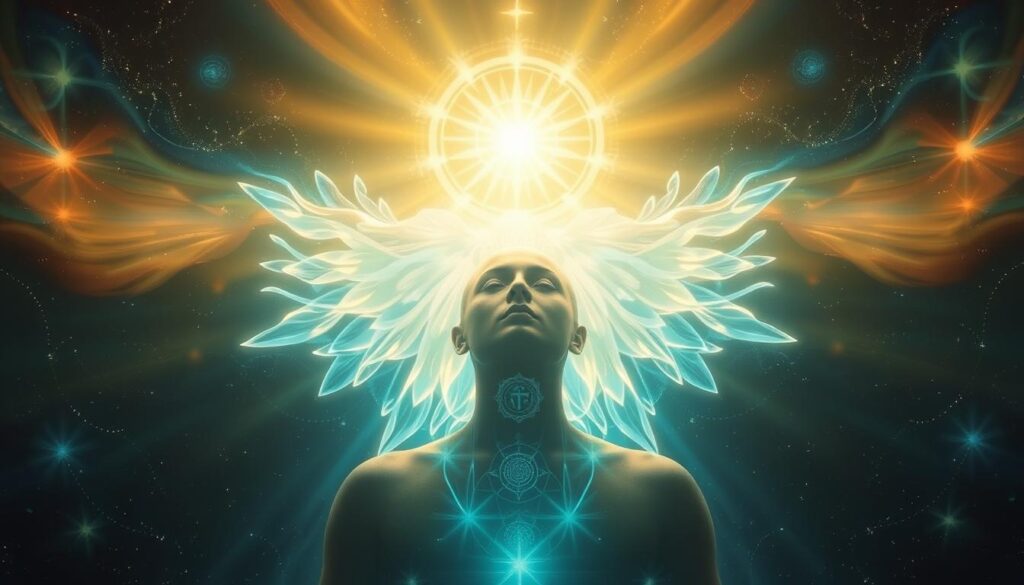
The enlightenment stage represents the realization of unity consciousness
The final stage of spiritual ascension is what traditions variously call enlightenment, self-realization, or unity consciousness. In Buddhist terms, this is “anuttara samyak sambodhi” or complete awakening. The Upanishads describe it as realizing “Aham Brahmasmi” (I am Brahman/the Absolute). Christ expressed it as “I and the Father are one.”
Enlightenment represents the full flowering of human consciousness—the realization of your true nature as both empty of separate self and simultaneously the fullness of all that is. It’s characterized by:
- Abiding non-dual awareness that doesn’t come and go
- Freedom from identification with thought and emotion
- Spontaneous compassion and love without cause
- Absence of personal suffering (though physical pain may remain)
- Living as an expression of the whole rather than a separate part
Importantly, enlightenment isn’t an achievement of the ego but rather its transcendence. As spiritual teacher Adyashanti notes: “Enlightenment is not a condition of perfection; it’s simply the end of identification with the thinking mind.”
While this stage is often portrayed as the end of the journey, many traditions recognize that even enlightenment continues to deepen and mature throughout life. The Zen tradition speaks of “ongoing practice after enlightenment,” acknowledging that embodying awakening is a never-ending process of refinement.
“The real voyage of discovery consists not in seeking new landscapes, but in having new eyes.”
The Cyclical Nature of Spiritual Ascension
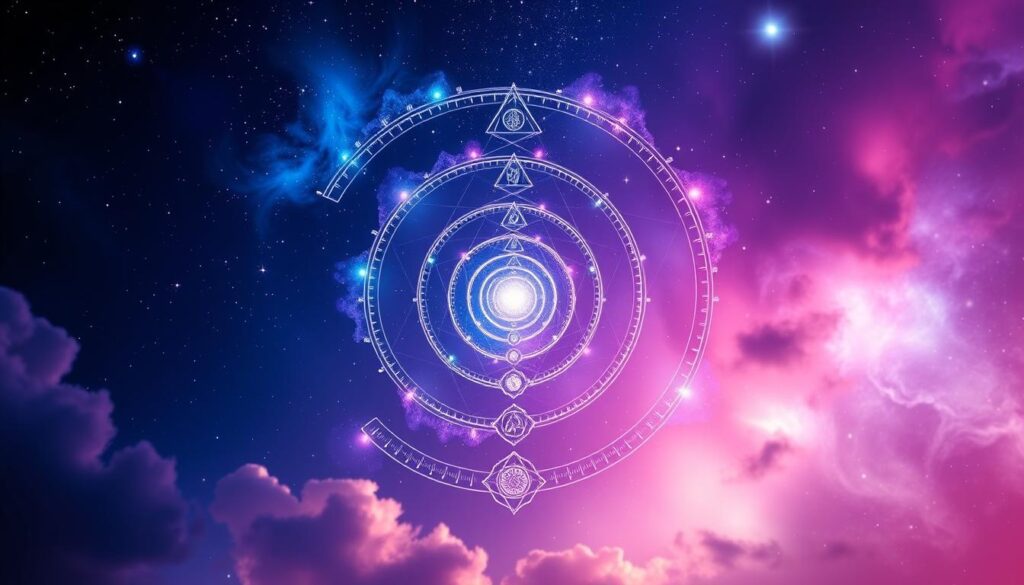
Spiritual ascension follows a spiral pattern rather than a linear progression
While I’ve presented these stages of spiritual ascension in a sequential order, it’s crucial to understand that the journey rarely unfolds in a perfectly linear fashion. Rather, it follows what many traditions call “the spiral path”—revisiting similar themes at deeper levels of understanding and integration.
You may experience elements of multiple stages simultaneously or move back and forth between them. For instance, even after profound illumination experiences, you may return to periods of purification as deeper layers of conditioning are revealed. Or you might experience aspects of integration while still working through the dark night of the soul.
The ancient symbol of the ouroboros—the snake eating its own tail—represents this cyclical nature of spiritual development. Each completion leads to a new beginning at a higher level of consciousness. As T.S. Eliot wrote: “We shall not cease from exploration, and the end of all our exploring will be to arrive where we started and know the place for the first time.”
Remember: There is no “falling behind” on the spiritual path. Each person’s journey unfolds in perfect timing according to their unique soul’s evolution. Trust the process and honor where you are right now.
Practical Guidance for Your Ascension Journey

Spiritual practices provide essential support throughout the ascension journey
Regardless of which stage of spiritual ascension you’re currently experiencing, certain practices and approaches can support your journey:
Meditation & Presence
- Daily meditation practice
- Mindfulness in everyday activities
- Regular nature immersion
- Body-centered awareness practices
Community & Guidance
- Finding authentic spiritual teachers
- Joining like-minded communities
- Reading wisdom teachings
- Spiritual retreats and workshops
Integration Tools
- Regular journaling
- Creative expression
- Shadow work and therapy
- Service to others
Perhaps the most important guidance is to approach your spiritual ascension with both commitment and gentleness. The journey requires dedication and discipline, yet also self-compassion and patience. As Ram Dass advised: “The spiritual journey is individual, highly personal. It can’t be organized or regulated. It isn’t true that everyone should follow one path. Listen to your own truth.”
Embracing Your Unique Ascension Path
The journey of spiritual ascension is both universal and deeply personal. While these seven stages provide a map of the territory, your specific path will unfold according to your unique soul’s blueprint and life circumstances. Some stages may be brief for you while others extend for years; some may arrive with dramatic intensity while others unfold so subtly you hardly notice the transition.
What matters most is not reaching some imagined destination but fully embracing each step of the journey with awareness and authenticity. As the Buddha taught, “The journey of a thousand miles begins with a single step.” Each moment of presence, each act of courage, each surrender of the false self brings you closer to the truth of who you really are.
Remember that spiritual ascension isn’t about escaping human experience but rather embracing it fully—with all its joy and sorrow, challenge and triumph—from an ever-deepening awareness of your true nature. In the words of spiritual teacher Adyashanti: “Enlightenment is not a change at all. It’s the recognition of what always has been.”

The spiritual ascension journey continues to unfold throughout life
Disclaimer: This article is for informational purposes only. The spiritual ascension journey is deeply personal, and this content is not intended to replace professional guidance. Consult a spiritual advisor, therapist, or healthcare provider for personalized support, especially if experiencing significant psychological or physical symptoms during spiritual awakening.
Sources & Further Reading
- Adyashanti. (2008). The End of Your World: Uncensored Straight Talk on the Nature of Enlightenment. Sounds True.
- Campbell, J. (1949). The Hero with a Thousand Faces. Pantheon Books.
- Tolle, E. (1999). The Power of Now: A Guide to Spiritual Enlightenment. New World Library.
- Wilber, K. (2000). Integral Psychology: Consciousness, Spirit, Psychology, Therapy. Shambhala.
- Taylor, S. (2023). “The Varieties of Spiritual Awakening: A Qualitative Study.” Journal of Transpersonal Psychology, 55(1), 42-68.
![]()

